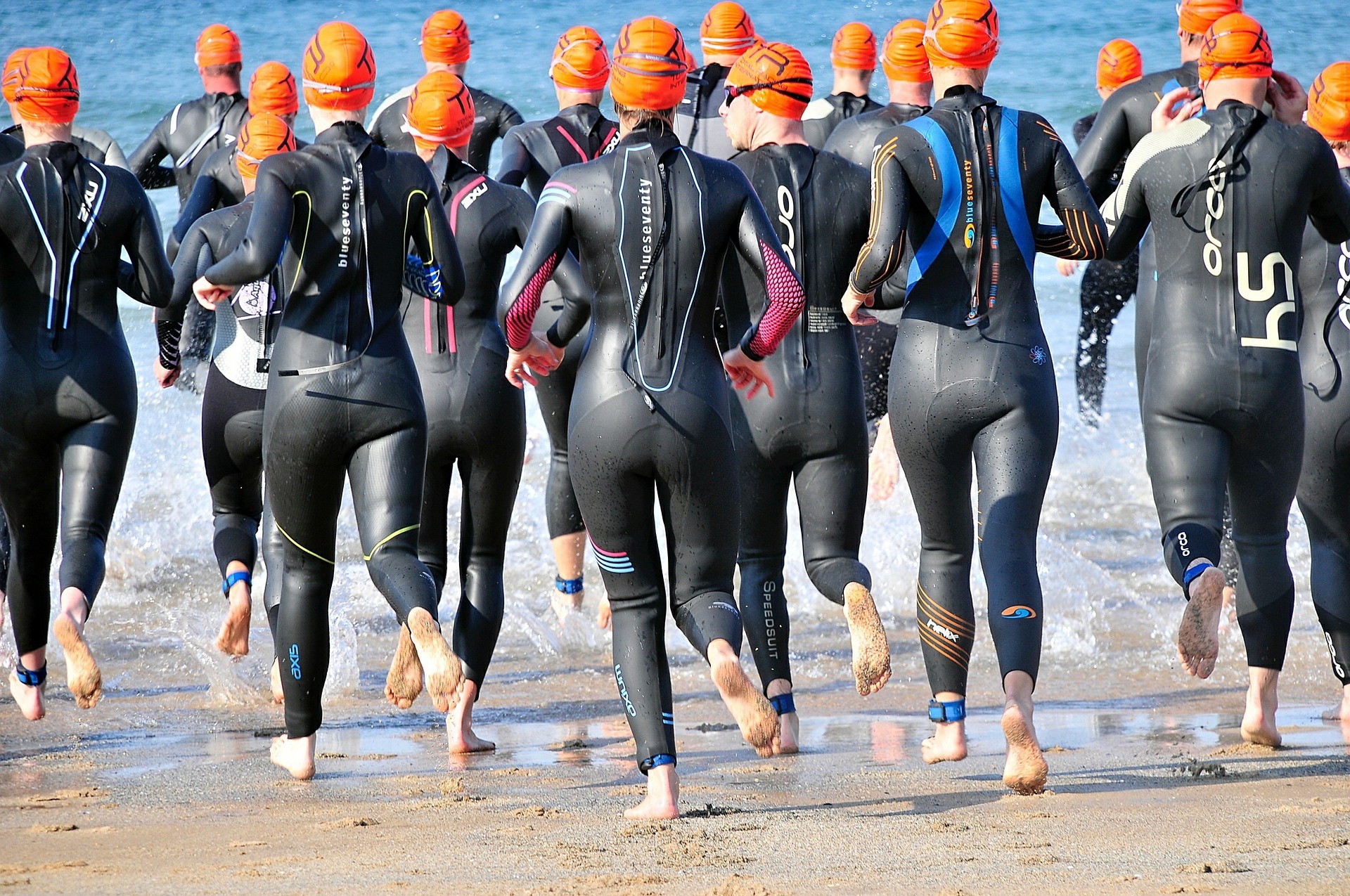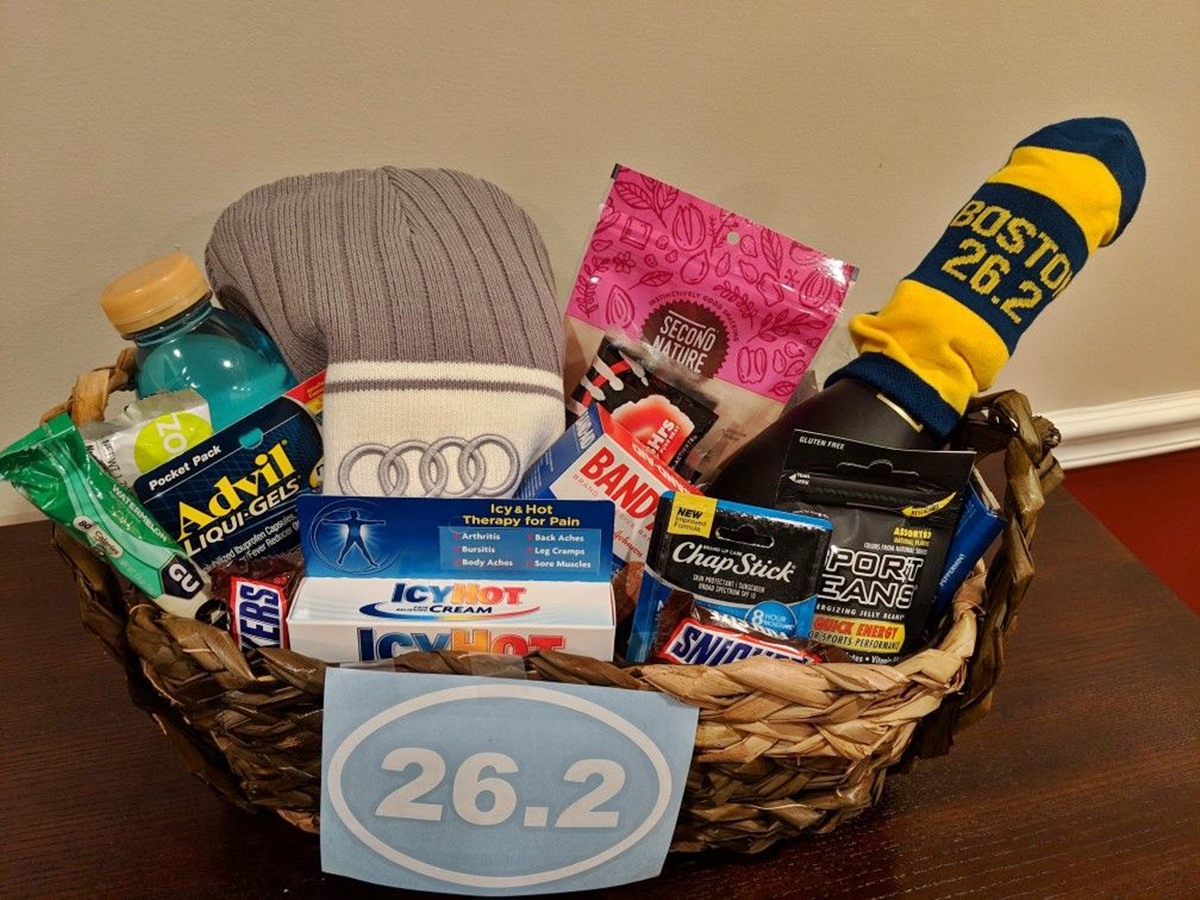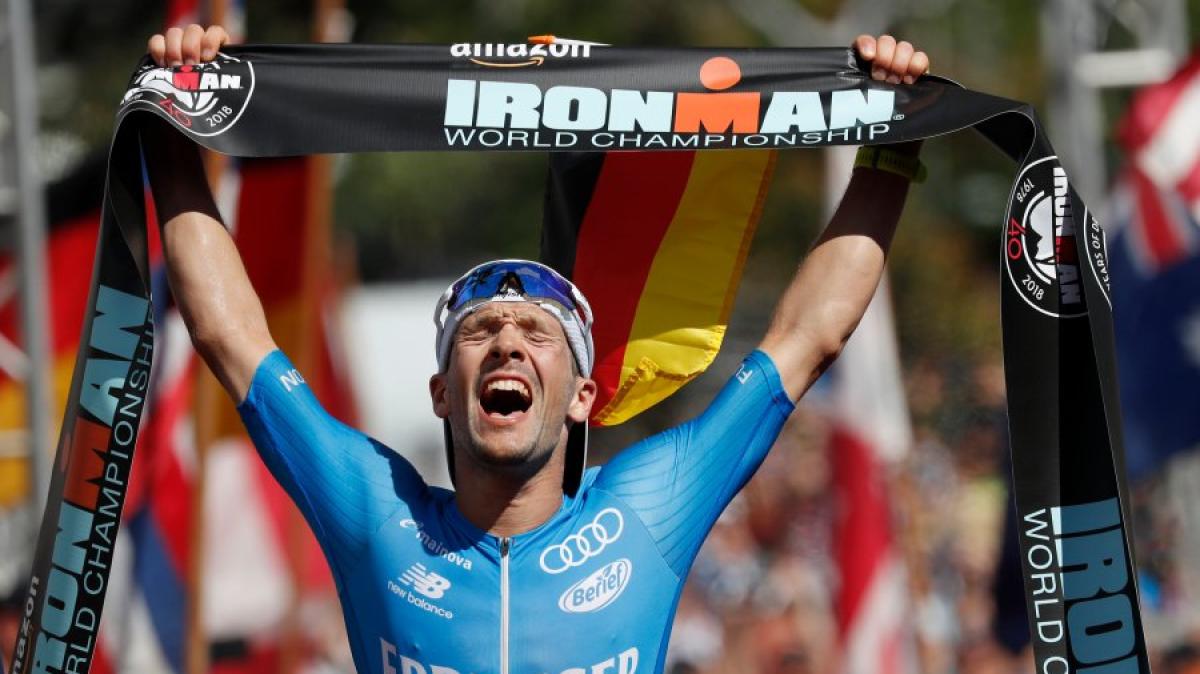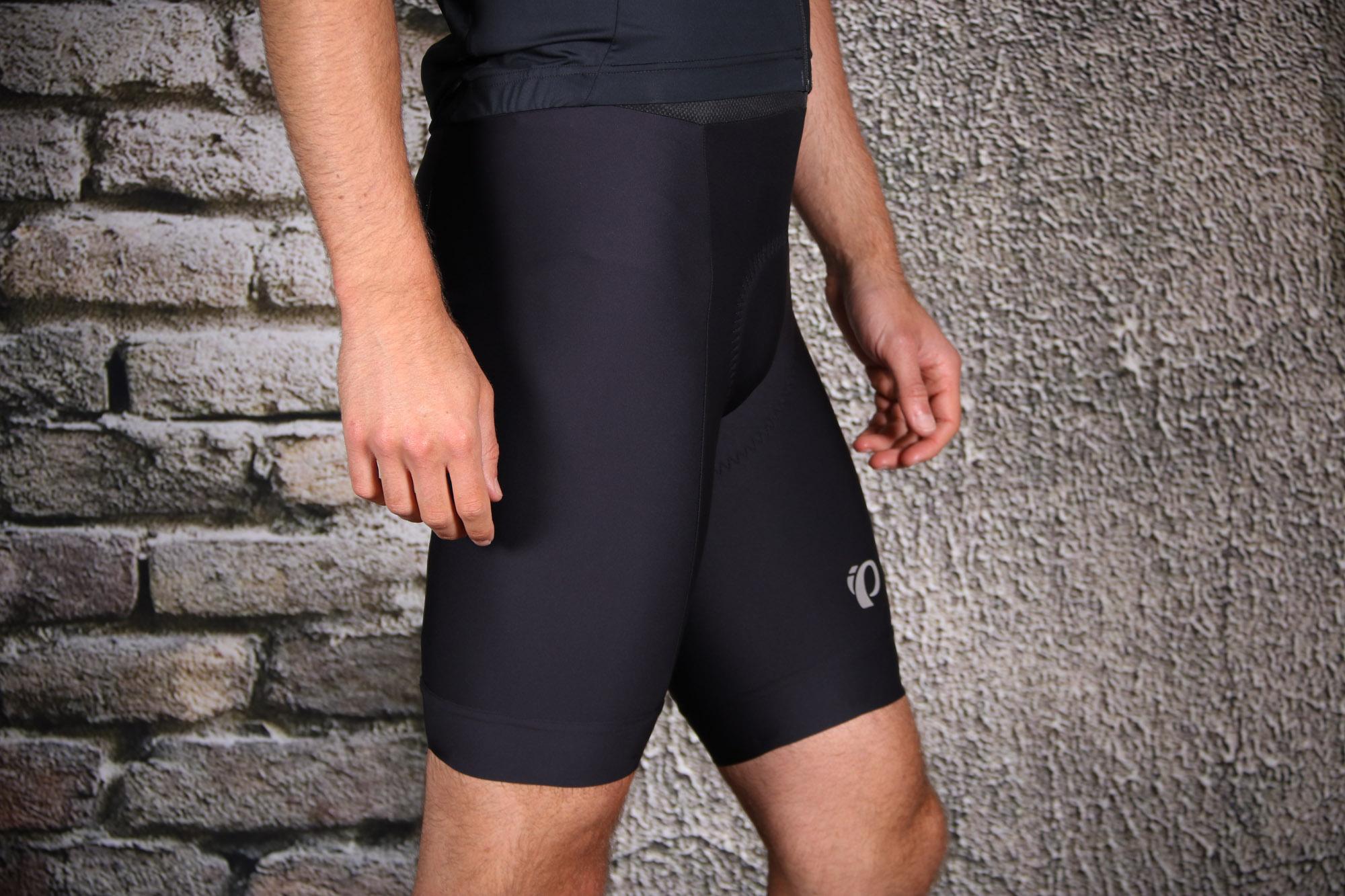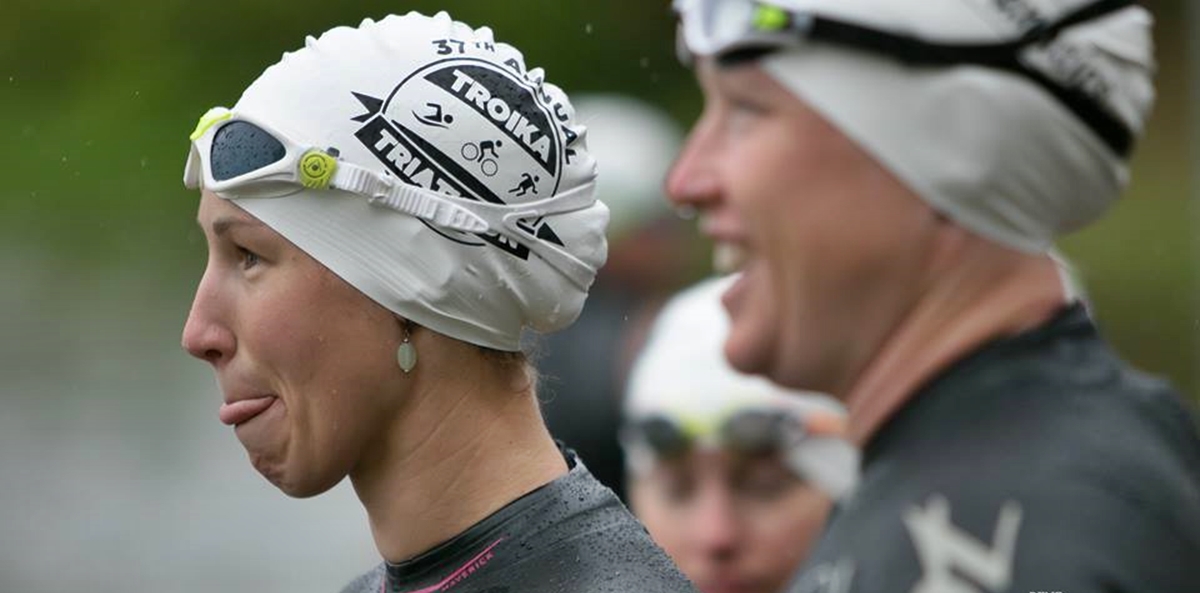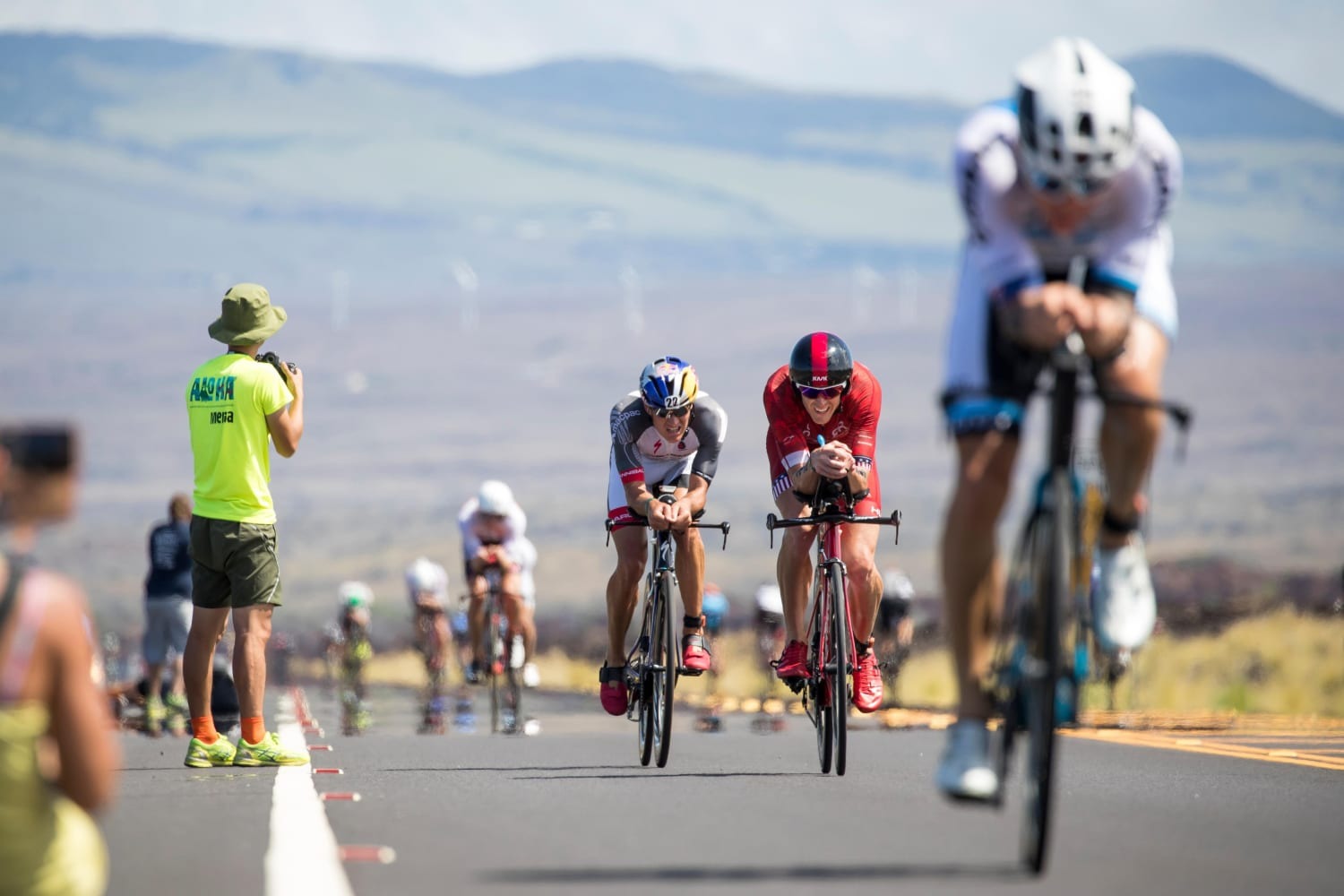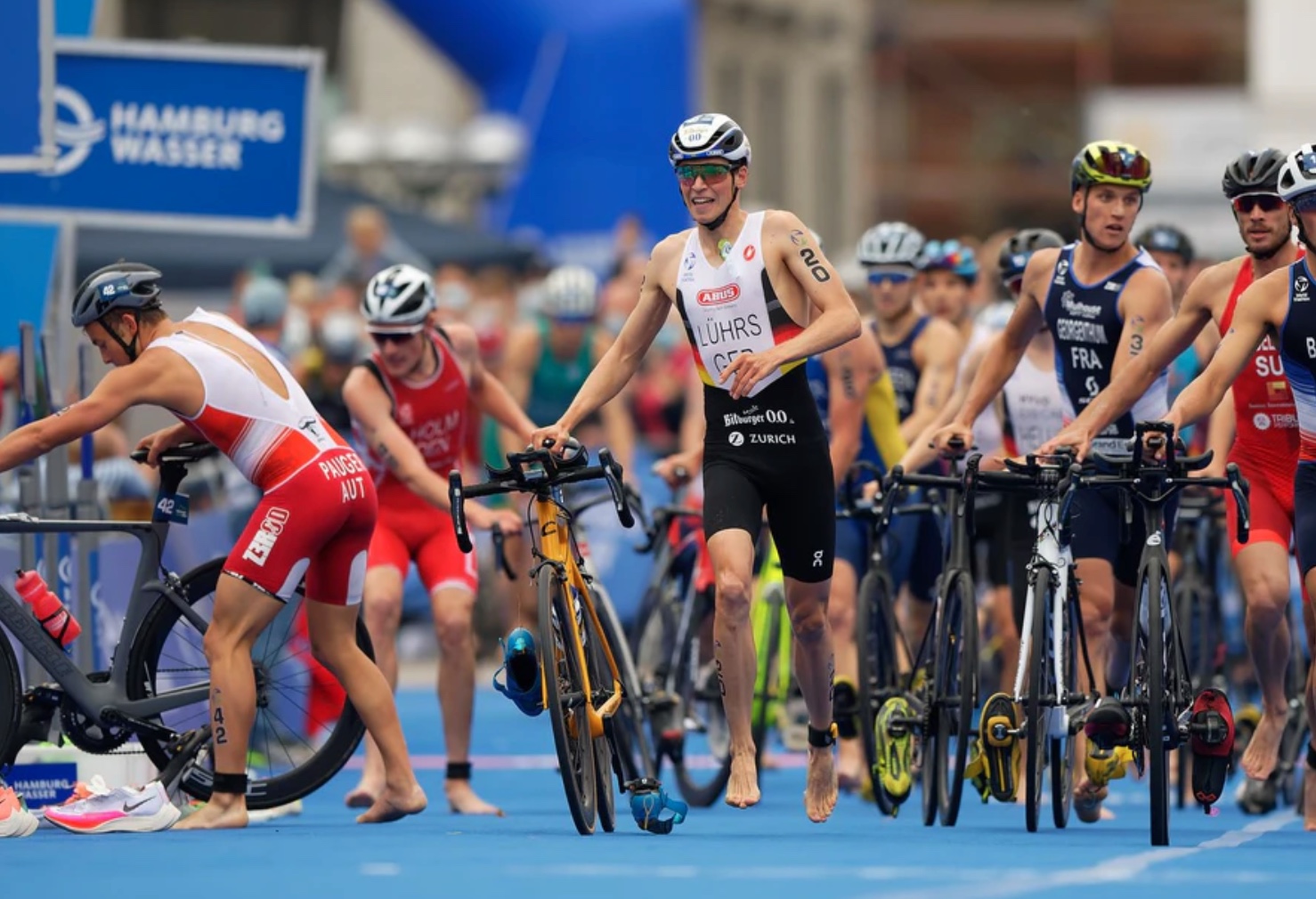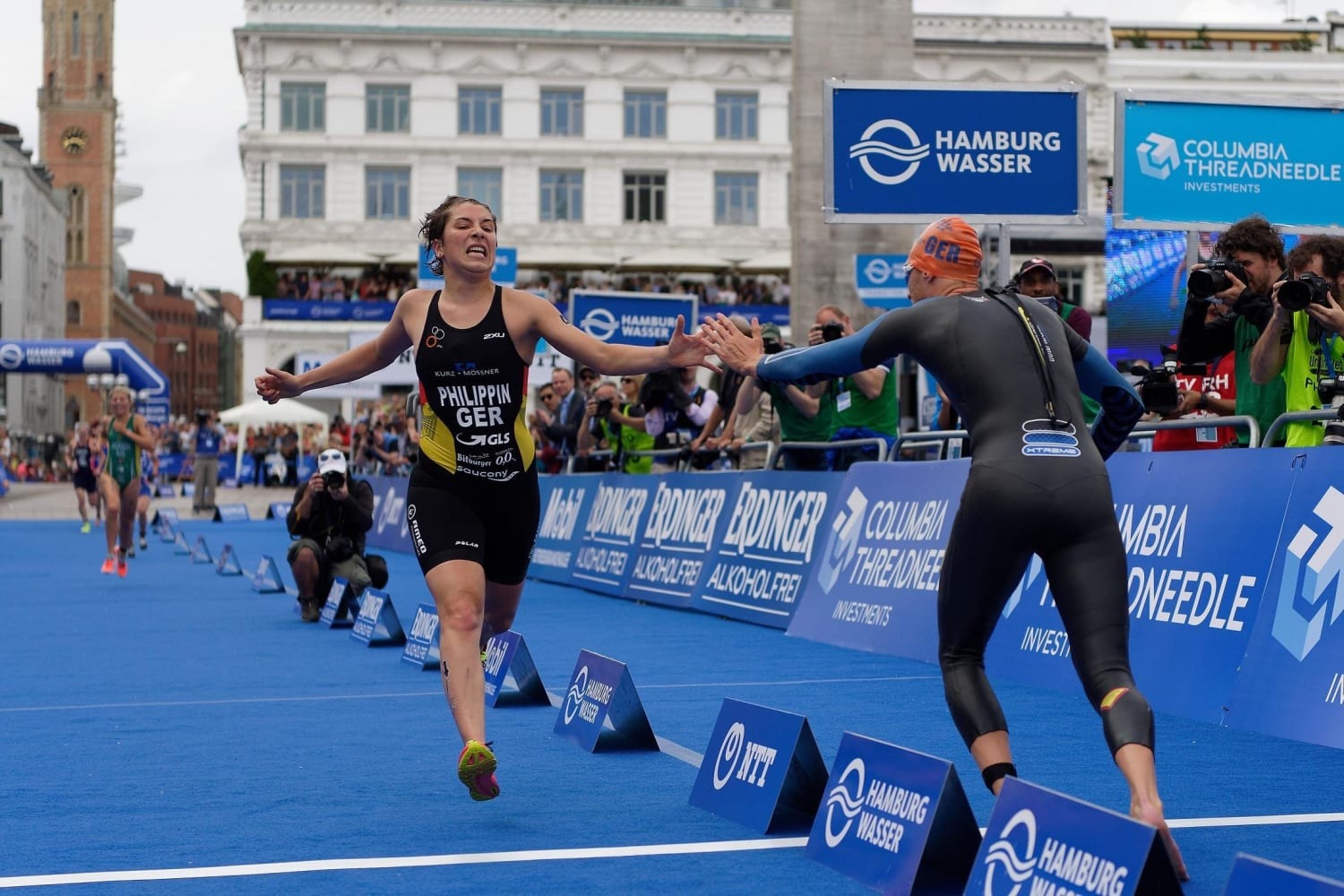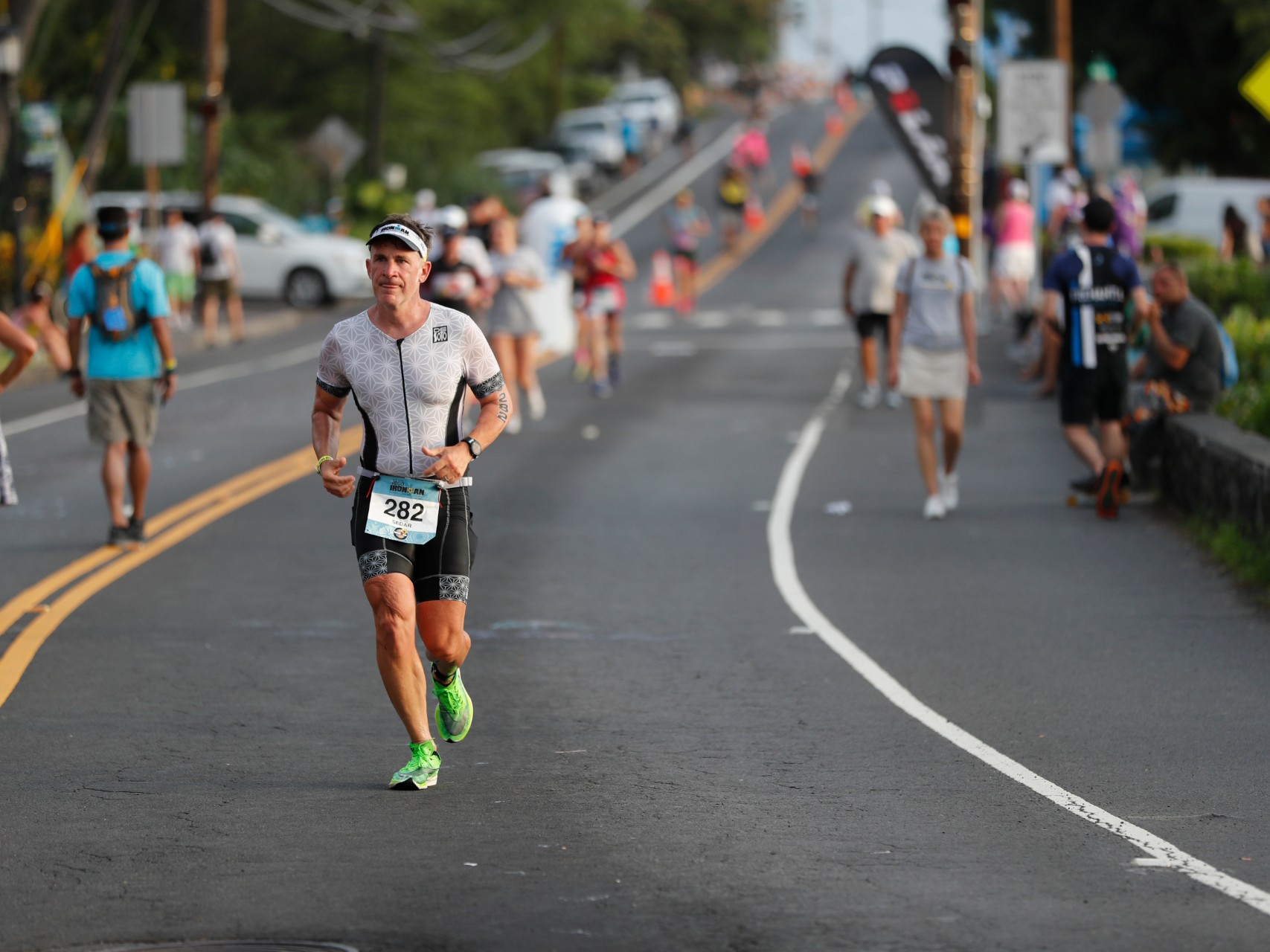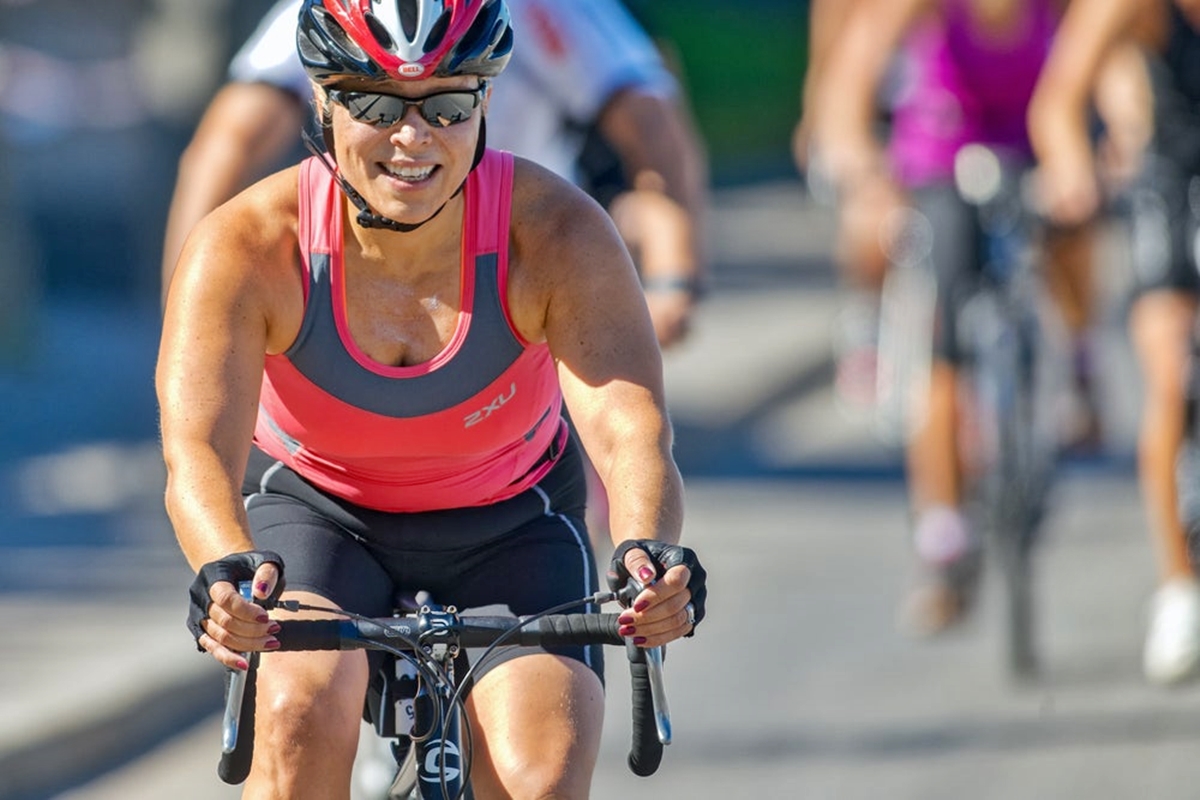

Featured
What To Wear For A Triathlon Female
Modified: May 22, 2024
Looking for featured triathlon gear? Discover the perfect outfits for female athletes to wear during triathlon races and maximize performance.
Introduction
Welcome to the exciting world of triathlon! Whether you’re a seasoned athlete or a newcomer to the sport, one of the key aspects of triathlon preparation is choosing the right apparel. In this article, we will explore the various options available for female triathletes when it comes to selecting triathlon clothing.
Triathlon is a multi-disciplinary sport that combines swimming, cycling, and running. Each leg of the race presents unique challenges and requires specific gear to ensure comfort, performance, and safety. Having the right clothing can make a significant difference in your overall triathlon experience.
When it comes to triathlon apparel, there are a few key factors to consider: functionality, comfort, durability, and style. Your clothing should enable you to perform at your best while providing the necessary support and protection throughout the race.
Before diving into the details of each component of triathlon apparel, it’s worth mentioning the importance of training in the clothes you plan to wear on race day. This will help you understand how they feel, fit, and perform in different conditions, allowing you to make any necessary adjustments or replacements.
It’s also essential to note that triathlon apparel comes in a wide range of styles, designs, and price points. Finding the right balance between quality and affordability will ultimately depend on your preferences and budget.
Now, let’s explore each section of triathlon apparel in more detail, starting with swim gear.
Choosing the Right Triathlon Apparel
When it comes to triathlon apparel, finding the right pieces can greatly enhance your performance and overall experience. Here are some key factors to consider when choosing your triathlon clothing:
- Functionality: Triathlon apparel should be designed to meet the specific needs of each discipline. Look for clothing that allows for easy movement in the water, provides ventilation and moisture-wicking properties during the bike leg, and offers comfort and support for the run.
- Comfort: Since triathlons can be grueling and demanding, it’s crucial to choose clothing that feels comfortable throughout the entire race. Look for seamless construction, flatlock stitching, and soft fabrics that minimize the risk of chafing and irritation.
- Durability: Triathlon clothing should be able to withstand the rigors of training and racing. Opt for high-quality materials that can withstand frequent use and washing without losing their shape or functionality.
- Fit: Proper fit is key to ensuring maximum comfort and performance. Make sure your triathlon clothing provides a snug yet non-restrictive fit, allowing for a full range of motion without excess fabric or sagging.
- Visibility: Safety is paramount in triathlon, so consider apparel with reflective elements or bright colors to enhance your visibility, especially during early morning or late evening races.
- Style: While performance should be your top priority, there’s no reason to sacrifice style. Choose triathlon apparel that makes you feel confident and motivated, as this can have a positive impact on your race performance.
Now that we have covered the key factors to consider, let’s explore each component of triathlon apparel in more detail, starting with swim gear.
Swim Gear
The swim leg of a triathlon is where it all begins. Having the right swim gear can help you navigate the water with ease and efficiency. Here are the essential swim gear items to consider:
Wetsuits:
Wetsuits provide buoyancy, insulation, and hydrodynamics to improve your performance in open water. Look for a wetsuit that fits snugly but allows for comfortable movement. The thickness of the wetsuit should be suitable for the water temperature of the race.
Swim Caps:
A swim cap not only keeps your hair out of your face but also enhances your hydrodynamics. Choose a snug-fitting swim cap that reduces drag and is made of a durable, quick-drying material.
Goggles:
Goggles are crucial for clear vision and eye protection while swimming. Look for goggles with anti-fog properties, UV protection, and a comfortable fit. It’s always a good idea to try out different styles to find the one that best suits your face shape and personal preferences.
Swim Suits:
When it comes to swim suits, you have various options depending on your comfort and performance preferences. Some triathletes prefer one-piece suits, which provide coverage and streamlined hydrodynamics. Others opt for two-piece suits for increased flexibility and convenience during bathroom breaks. Choose a swim suit that fits well, offers freedom of movement, and dries quickly.
Having the right swim gear can significantly impact your swim leg performance. Make sure to train in your swim gear to ensure a comfortable fit and familiarity with your equipment.
Wetsuits
Wetsuits are a crucial piece of swim gear for triathletes, especially when competing in open water or colder temperatures. They provide several benefits that can enhance your performance and comfort in the water. Here’s what you need to know about wetsuits:
Buoyancy: Wetsuits are designed with neoprene material, which provides buoyancy by trapping a thin layer of water between your body and the suit. This buoyancy helps to lift you in the water, reducing drag and making it easier to swim efficiently.
Insulation: In colder water conditions, wetsuits act as a barrier against the cold, helping to maintain your body temperature. This insulation is crucial for preventing hypothermia and ensuring optimal performance during the swim leg.
Hydrodynamics: Wetsuits are designed to reduce drag and streamline your body position in the water. The neoprene material is smooth and sleek, helping you glide through the water with less resistance, thus improving your speed and efficiency.
When choosing a wetsuit, consider the following:
- Fit: It’s crucial to find a wetsuit that fits snugly but is not too tight. A well-fitted wetsuit should allow for a full range of motion in your arms and legs. Ensure that the wetsuit covers your entire torso and reaches your wrists and ankles without excessive bunching.
- Thickness: Wetsuits come in different thicknesses, usually ranging from 2mm to 5mm. The thickness you choose depends on the water temperature of the race. Warmer waters may require a thinner wetsuit, while colder waters will necessitate a thicker one for better insulation.
- Zipper: Wetsuits typically have a back zipper or a front zipper. Back-zip wetsuits are more common and easier to put on and take off. Front-zip wetsuits offer a better range of motion in the shoulders but can be slightly more challenging to remove.
- Neckline: Consider the neckline style of the wetsuits, as it can affect comfort and water entry. High-neck wetsuits provide better protection against water entering the suit but may feel restrictive for some. Low-neck or collarless wetsuits offer more freedom of movement but can allow more water inside.
Investing in a high-quality wetsuit that fits well and suits the conditions of your races can have a significant impact on your swim performance. Make sure to try on different brands and sizes to find the one that fits you best.
Swim Caps
Swim caps are an essential accessory for triathletes during the swim leg of a race. They offer both practical and performance benefits. Here’s what you need to know about swim caps:
Hair Protection: Swim caps help keep your hair out of your face, preventing distraction and allowing for better visibility in the water. They also protect your hair from the damaging effects of chlorine and saltwater.
Hydrodynamics: A swim cap can reduce drag and improve your hydrodynamics in the water. The smooth surface of the cap helps water flow more easily around your head, reducing resistance and enhancing your swimming speed.
Identification: Swim caps often come in different colors or designs, which can help race organizers and fellow triathletes identify you in the water. It’s a practical way to stand out and make it easier for your supporters to spot you during the race.
When choosing a swim cap, consider the following:
- Material: Swim caps are typically made of latex, silicone, or lycra. Latex caps are inexpensive but less durable. Silicone caps are more durable and offer a comfortable fit. Lycra caps, while less hydrodynamic, are suitable for those with latex or silicone allergies.
- Fit: A swim cap should fit snugly but not be overly tight or uncomfortable. Make sure it covers your head from the hairline to the base of your neck without folding or slipping. Experiment with different sizes and materials to find the one that provides the best fit for you.
- Design: Swim caps come in various designs and colors, so choose one that matches your style and preference. Some caps also feature additional features like built-in ear pockets for added comfort and protection.
Remember, wearing a swim cap is often mandatory in triathlon races, so make sure to practice swimming with one during your training sessions to get used to the feel and ensure a comfortable fit.
Goggles
Goggles are an essential piece of swim gear for triathletes, providing clear vision and protecting the eyes during the swim leg of a race. Choosing the right goggles can greatly enhance your swimming experience. Here’s what you need to know about goggles:
Vision: Goggles improve visibility in the water, allowing you to see clearly without straining your eyes. They protect your eyes from irritants such as chlorine, saltwater, and debris, ensuring a comfortable and safe swim.
Fit: A proper fit is essential for goggles. They should create a snug seal around your eye sockets, preventing water from entering while not being too tight or uncomfortable. Look for goggles with adjustable straps to customize the fit to your liking.
Lens Type: Goggles offer different lens types to suit various lighting conditions. Clear lenses are ideal for indoor pools and low-light conditions, while tinted or mirrored lenses reduce glare in bright outdoor environments.
Anti-Fog Properties: Fogging can obstruct your vision and distract you during the swim. Look for goggles with anti-fog coatings or lenses to prevent condensation and maintain clear visibility throughout your race.
UV Protection: If you’re swimming outdoors, UV protection becomes crucial. Look for goggles that offer UV protection to shield your eyes from harmful sun rays.
When choosing goggles, consider the following:
- Comfort: Make sure the goggles have cushioning around the eye sockets for a comfortable fit. Try different styles and models to find the one that feels most comfortable for you.
- Nose Bridge: Goggles come with different nose bridge sizes or adjustable nose pieces. Ensure the goggles have a nose bridge that fits your face shape to prevent discomfort or leaking.
- Leak-Proof: Look for goggles with a reliable sealing system that prevents water from leaking inside. The last thing you want is to deal with frequent adjustments or distractions due to water entering your goggles.
Take the time to try on various goggles and experiment with different styles and brands to find the perfect fit for your face shape and preferences. And remember, it’s always a good idea to test your goggles in the pool before your race to ensure they provide a comfortable and leak-free experience.
Swim Suits
When it comes to swim gear for triathletes, choosing the right swim suit is essential. The swim suit you wear during the swim leg of a triathlon should provide comfort, freedom of movement, and optimal hydrodynamics. Here are some key points to consider when selecting a swim suit:
One-Piece Suits: One-piece swim suits are a popular choice among triathletes. They offer coverage and streamlined hydrodynamics, reducing drag in the water. Look for a one-piece suit that fits well, offers support, and allows for a full range of motion in your arms and legs.
Two-Piece Suits: Two-piece swim suits, consisting of a top and bottom, can offer increased flexibility and convenience, especially during bathroom breaks. They provide the freedom to mix and match sizes and styles to find the most comfortable fit for your body shape.
Material: Swim suits are typically made from materials such as polyester, nylon, or spandex. Look for a suit that is lightweight, quick-drying, and chlorine-resistant. These features will ensure your suit remains comfortable and durable throughout your training sessions and races.
Fit: A proper fit is crucial for a swim suit. It should fit snugly but not be overly tight or restrictive. Ensure the suit provides adequate coverage and support while allowing for freedom of movement in the water.
Fastenings: Consider the fastening mechanisms of the swim suit. Some suits may have back zippers, while others may have adjustable straps or tie closures. Choose a fastening method that is comfortable and secure for you.
Additionally, when choosing a swim suit, consider your personal preferences and the specific requirements of your race. Some races may have specific rules or guidelines regarding swim suit designs or coverage. Familiarize yourself with these regulations to ensure you choose a suit that complies with the race standards.
Don’t forget to try on different sizes and styles to find the swim suit that fits you best and makes you feel confident in the water. Comfort and performance go hand in hand when it comes to swim suits, so take the time to find the perfect suit for your triathlon endeavors.
Transition Area Essentials
The transition area is a crucial part of any triathlon race, serving as the hub for transitioning between different disciplines. Having the right gear and essentials in your transition area can save you time and ensure a smooth transition. Here are some key items to consider:
Transition Mat or Towel:
Using a transition mat or towel helps define your personal space in the transition area. It provides a clean and organized surface for laying out your gear, making it easier to locate everything during fast-paced transitions.
Helmet:
A properly fitting and approved cycling helmet is an absolute must for the bike leg. Ensure that your helmet meets safety standards and fits securely without being too tight or loose. Remember, safety should always be a priority.
Bike Shoes:
Investing in a pair of cycling-specific shoes can significantly enhance your cycling performance. They provide a stiff sole for efficient power transfer and often have a secure closure system like Velcro straps or boa dials. Make sure your shoes are compatible with your bike’s pedal system.
Running Shoes:
Your running shoes should be lightweight, comfortable, and provide adequate support for your feet. Choose a pair that matches your foot type and running style. Make sure to break them in before race day to avoid discomfort or blisters.
Socks:
Wearing socks during the bike and run legs can help prevent friction and blisters. Look for moisture-wicking and cushioned socks that fit well and complement your chosen footwear.
Race Belt:
A race belt is a convenient accessory that holds your race number, allowing you to easily transition from the bike to the run without having to pin your number to your clothing. Look for a belt that is adjustable, comfortable, and has toggles or clips for easy attachment.
Fuel and Hydration:
Have your preferred energy gels, bars, or chews, as well as a water bottle or hydration system, ready in your transition area. Staying fueled and hydrated throughout the race is essential for maintaining energy and performance.
Remember to practice setting up and transitioning in your designated area before race day to familiarize yourself with the layout and optimize your efficiency. Everything in your transition area should be neatly organized and easily accessible, allowing you to shave off precious seconds and focus on your race.
Triathlon Tops
In the world of triathlon, having the right top can make all the difference in your comfort and performance. Triathlon tops are designed to provide moisture-wicking, breathability, and a comfortable fit for all three disciplines. Here are some key points to consider when choosing a triathlon top:
Material: Look for tops made from lightweight and breathable materials such as polyester or nylon. These fabrics help wick away moisture and keep you cool during the race. Some tops may also have mesh panels or ventilation areas for additional breathability.
Fit: Triathlon tops should fit snugly without being too tight or restrictive. Ensure that the top allows for a full range of motion in your arms and shoulders without causing discomfort or chafing. Opt for tops with a longer length to prevent it from riding up during the race.
Sleeve Length: Triathlon tops come in different sleeve lengths, from sleeveless to short-sleeved and long-sleeved options. Choose a sleeve length that suits your preference and the weather conditions of the race. Sleeveless tops offer maximum freedom of movement, while long-sleeved tops provide more sun protection and warmth.
Zipper: Some triathlon tops feature a front zipper for additional ventilation and ease of getting the top on and off. The zipper should be easy to manipulate, even when wet, and have a fabric flap underneath to prevent chafing.
Pockets: Pockets in triathlon tops are handy for storing gels, nutrition, or small essential items. Look for tops with secure pockets that won’t bounce or interfere with your movement during the race.
Sun Protection: If you’re racing in sunny conditions, consider a top with built-in UV protection to shield your skin from harmful rays. Look for tops with a high UPF (Ultraviolet Protection Factor) rating for maximum sun protection.
When choosing a triathlon top, it’s important to find one that not only fits well but also makes you feel comfortable and confident during the race. Practice training in your top to ensure it performs well and suits your needs in terms of breathability, comfort, and functionality. With the right triathlon top, you’ll be ready to conquer all three disciplines and perform at your best.
Triathlon Shorts
Triathlon shorts are a crucial piece of apparel for any triathlete. They provide comfort, flexibility, and support throughout all three disciplines. Here are key considerations when choosing triathlon shorts:
Material: Opt for triathlon shorts made of lightweight and quick-drying materials like polyester or nylon. These fabrics offer excellent moisture-wicking properties, helping to keep you dry and comfortable during the race.
Padding: Triathlon shorts usually come with a built-in chamois or padding to provide extra comfort during the bike leg. The padding should be sufficiently dense and breathable to reduce friction and cushion your sit bones without adding excessive bulk.
Fit: Seek triathlon shorts that fit snugly without being overly tight or restricting your movement. Look for a waistband that sits comfortably without digging into your skin, and make sure the leg openings are secure but not too tight.
Sizing: Sizing can vary among brands, so consult the size chart provided by the manufacturer and consider customer reviews to determine the most accurate fit. When in doubt, it’s generally better to size up for comfort.
Length: Triathlon shorts come in different lengths, including standard, mid-thigh, and longer inseam options. Choose a length that offers the right balance between comfort, modesty, and freedom of movement.
Grip: Look for triathlon shorts with silicone leg grippers to prevent them from riding up during the race. These grippers help keep the shorts in place without squeezing or causing discomfort.
Pockets: Some triathlon shorts feature pockets at the back or sides to store small essentials like gels or keys. Consider the number and placement of pockets based on your needs, but ensure they don’t interfere with your movement or add excess weight.
Remember to train in your triathlon shorts before race day to ensure they provide the proper fit and functionality. It’s essential to feel comfortable and confident throughout your race, and the right triathlon shorts can play a significant role in enhancing your overall performance.
Triathlon Skirts
Triathlon skirts offer a feminine and stylish alternative to traditional triathlon shorts. They provide comfort, coverage, and a touch of flair for female triathletes. Here’s what you need to know about triathlon skirts:
Design: Triathlon skirts typically feature a built-in brief or short underneath a lightweight and breathable skirt overlay. The skirt adds a feminine touch while the inner shorts provide the necessary coverage and support.
Comfort: Triathlon skirts are designed to be comfortable and non-restrictive, allowing for a full range of motion. The materials used are often lightweight, moisture-wicking, and quick-drying, ensuring maximum comfort throughout the race.
Fit: It’s essential to find a triathlon skirt that fits well and stays in place during all three disciplines. Look for a skirt with a secure waistband and an adjustable drawstring or elastic for a personalized fit.
Modesty: The skirt overlay offers added coverage and modesty, which can be preferred by some female triathletes. It’s a great option for those who may feel more comfortable with additional coverage during the race.
Functionality: Despite the stylish appearance, triathlon skirts are designed with functionality in mind. They offer the same benefits as traditional triathlon shorts, including moisture-wicking properties, breathability, and a comfortable chamois for the bike leg.
Versatility: Triathlon skirts are not only suitable for races but can also be worn during training sessions and other active pursuits. They offer a versatile option for female athletes who want a feminine and functional choice for their triathlon attire.
Triathlon skirts come in various lengths and styles, allowing you to choose the one that suits your personal preference and race requirements. Like any triathlon apparel, it’s important to train in your skirt to ensure it provides the desired fit, comfort, and performance for your races. With a triathlon skirt, you can add a touch of style to your triathlon outfit without compromising on functionality.
Triathlon Suits
Triathlon suits are all-in-one garments that encompass both a top and shorts in a single piece. They are a popular choice among triathletes due to their convenience, comfort, and streamlined design. Here’s what you need to know about triathlon suits:
One-Piece Design: Triathlon suits eliminate the need for separate tops and shorts, providing a seamless and streamlined option for all three disciplines. The one-piece design reduces drag in the water and offers a comfortable fit without excess fabric.
Material: Triathlon suits are typically made from lightweight and breathable materials such as Lycra or spandex blends. These fabrics offer excellent stretch, moisture-wicking properties, and quick-drying capabilities.
Chamois: The chamois in a triathlon suit provides cushioning and support for the bike leg. The chamois is often minimally padded to provide comfort without interfering with running or swimming movements.
Fit: Triathlon suits should fit snugly without being overly tight or restrictive. Look for a suit that allows for a full range of motion in the arms and legs and has a secure waistband to prevent slipping or chafing.
Zipper: Some triathlon suits feature a front zipper for easy on and off, as well as additional ventilation during the race. The zipper should be easy to manipulate, even when wet, and have a fabric flap underneath to prevent irritation or chafing.
Pockets: Depending on the design, triathlon suits may have small pockets at the back or sides for storing gels or small essentials. Consider the number and placement of pockets based on your needs, but ensure they do not hinder your movements.
Triathlon suits offer the convenience of a single piece of clothing that spans all three disciplines. They provide a comfortable and efficient option for race day, allowing you to transition smoothly and perform at your best. Make sure to train in your triathlon suit to ensure it provides the desired fit, comfort, and functionality for your races.
Cycling Gear
When it comes to triathlon, the cycling leg requires specific gear to ensure performance and comfort on the bike. Here are some essential components to consider when it comes to cycling gear for triathletes:
Cycling Jersey:
A cycling jersey is designed to offer breathability, moisture-wicking, and a comfortable fit during the bike leg. Look for a jersey that is made of lightweight materials with mesh panels for enhanced ventilation. The jersey should have a full-length zipper for easy ventilation adjustments and pockets at the back to store nutrition or small essentials.
Cycling Shorts:
Cycling shorts provide padding and support, ensuring comfort during long rides. Look for shorts with a chamois (padded insert) that provides cushioning and reduces friction. The shorts should fit snugly without restricting movement and have leg grippers to prevent riding or bunching.
Cycling Shoes:
Cycling-specific shoes are essential for efficient power transfer from your legs to the pedals. Look for shoes with a stiff sole for optimal energy transfer and a secure closure system such as Velcro straps or boa dials. Ensure that the shoes are compatible with your bike’s pedal system (e.g., clipless pedals).
Cycling Gloves:
Gloves provide comfort, grip, and protection during the bike leg. They help absorb vibrations, reduce pressure points, and protect your hands in case of a fall. Look for gloves with padding on the palm area and breathable materials to keep your hands comfortable and dry.
Cycling gear plays a crucial role in your bike leg performance. It’s important to invest in quality gear that fits well and enhances your comfort. Remember to spend time training in your cycling gear to ensure it feels comfortable and performs optimally on race day. With the right cycling gear, you’ll be ready to tackle the bike leg of your triathlon with confidence.
Cycling Jerseys
Cycling jerseys are an essential piece of gear for triathletes during the bike leg of a race. They provide comfort, performance, and functionality to enhance your cycling experience. Here’s what you need to know about cycling jerseys:
Material: Cycling jerseys are typically made from lightweight and breathable materials such as polyester or synthetic blends. These fabrics offer moisture-wicking properties, helping to keep you cool and dry during your ride. Look for jerseys with mesh panels or ventilation zones for added breathability.
Fit: Cycling jerseys should fit snugly without being overly tight or restrictive. A well-fitted jersey should contour to your body without excess fabric flapping in the wind. It’s important to choose a jersey that allows for optimal freedom of movement in the arms and shoulders.
Zipper: Most cycling jerseys have a full-length zipper at the front, allowing for easy ventilation adjustments during your ride. The zipper should be robust and easy to manipulate, even when wearing gloves. Look for jerseys with a zipper garage at the top to prevent irritation on your neck.
Pockets: Cycling jerseys often feature three rear pockets at the back, providing convenient storage for nutrition, small essentials, or your phone. These pockets should be easily accessible and secure enough to prevent items from bouncing out during your ride.
Visibility: Safety is paramount while cycling, so consider jerseys with high visibility features such as reflective elements or bright colors. These added visibility elements help improve your presence on the road, especially in low-light conditions.
Sun Protection: If you’re riding in sunny conditions, choose jerseys with built-in UV protection to shield your skin from harmful sun rays. Look for jerseys with a high UPF (Ultraviolet Protection Factor) rating for maximum sun protection.
Design: While performance and functionality are key, there’s no reason why your jersey can’t also make a style statement. Choose a jersey with a design that reflects your personality or matches your team kits.
Cycling jerseys are an important part of your cycling gear. They provide comfort, ventilation, and storage options to ensure an enjoyable and efficient ride. Remember to test your jerseys during training rides to ensure they fit well and perform optimally. With the right cycling jersey, you’ll be ready to tackle the bike leg of your triathlon with confidence and style.
Cycling Shorts
Cycling shorts are a crucial part of a triathlete’s gear for the bike leg of a race. They provide comfort, support, and performance benefits to enhance your cycling experience. Here’s what you need to know about cycling shorts:
Padding: One of the key features of cycling shorts is the chamois (padded insert) in the seating area. The chamois provides cushioning, reduces friction, and helps to absorb road vibrations, ensuring a more comfortable ride.
Material: Cycling shorts are typically made from spandex blends or Lycra, providing a snug and supportive fit. These materials offer four-way stretch, moisture-wicking properties, and breathability, helping to keep you cool and dry during your ride.
Fit: Cycling shorts should fit snugly without being too tight or restrictive. The snug fit prevents chafing and reduces the risk of the shorts riding up during your ride. Look for shorts with a wide, elastic waistband that stays in place without digging into your skin.
Length: Cycling shorts come in various lengths, including standard, mid-thigh, and longer inseam options. Choose a length that offers the right balance between comfort, coverage, and freedom of movement. Longer lengths can provide additional muscle compression and sun protection.
Leg Grippers: Leg grippers on the bottom hem of the shorts help to keep them in place during your ride. Look for grippers made of silicone or other non-slip materials that ensure the shorts stay in position without causing discomfort or constriction.
Seams: Pay attention to the construction and placement of seams in cycling shorts. Flatlock or seamless construction helps to minimize friction and chafing, enhancing comfort and reducing the risk of irritation during longer rides.
Style: While functionality is paramount, cycling shorts come in a variety of designs and patterns to suit your personal style and preferences. Don’t be afraid to choose shorts that make you feel confident and motivated on the bike.
Cycling shorts are an investment that can significantly enhance your comfort and performance on the bike. It’s important to test several brands and styles to find the ones that fit you best. Remember to train in your cycling shorts to ensure they provide the desired amount of support and comfort during your triathlon races. With the right pair of cycling shorts, you’ll be ready to tackle the bike leg with confidence and ease.
Cycling Shoes
Cycling shoes play a crucial role in a triathlete’s performance and comfort during the bike leg of a race. They provide a secure connection between your feet and the pedals, allowing for efficient power transfer. Here’s what you need to know about cycling shoes:
Sole Stiffness: Cycling shoes are designed with a stiff sole to maximize power transfer from your legs to the pedals. Look for shoes with a carbon composite or nylon sole that balances rigidity with some level of flexibility for comfort.
Compatibility: Consider the pedal system you are using or planning to use. Most cycling shoes are designed to be compatible with either clipless pedals or flat pedals. Match the shoes to the pedal system to ensure a seamless connection.
Fit: Proper fit is crucial for cycling shoes. They should feel snug but not overly tight or constricting. Look for shoes with adjustable closures, like Velcro straps, ratchet buckles, or boa dials, to customize the fit to your liking.
Breathability: Cycling shoes should offer ventilation to keep your feet cool and dry during long rides. Look for shoes with mesh panels or perforations that allow for airflow and moisture-wicking materials that help to prevent sweat accumulation.
Comfort: Look for shoes with padding and cushioning in key areas, such as the heel and tongue, to enhance comfort. It’s important to find a balance between a secure fit and adequate padding to prevent hot spots or pressure points.
Walkability: Depending on your race and preferences, consider the level of walkability you need in cycling shoes. Triathlon-specific shoes often have additional features like heel loops or quick-pull tabs for easier transitions and rubberized soles for better traction when walking or running.
Try Before You Buy: It’s essential to try on cycling shoes before making a purchase. Visit a local store to get properly fitted and feel different brands and models on your feet. This allows you to find the shoes that offer the best fit, comfort, and performance for your needs.
Cycling shoes are a vital investment for any triathlete. They provide the interface between your body and the bike, making them essential for optimal performance during the bike leg of a race. Take the time to find the right pair of cycling shoes, and make sure to train in them to ensure they feel comfortable and allow for efficient power transfer on race day.
Cycling Gloves
Cycling gloves are an important component of a triathlete’s gear, providing comfort, grip, and protection during the bike leg of a race. Here’s what you need to know about cycling gloves:
Comfort: Cycling gloves are designed to provide cushioning and reduce pressure points on your palms during long rides. Padded areas on the palms help absorb road vibrations, minimizing hand fatigue and discomfort.
Grip: Cycling gloves offer enhanced grip on the handlebars, ensuring better control and stability. Look for gloves with grippy materials on the palms, such as silicone or synthetic leather, that provide traction and prevent slippage while riding.
Protection: Gloves provide protection for your hands in case of a fall. They help to minimize abrasions and friction during crashes or unexpected road incidents. Some gloves also offer added protection with reinforced padding on the knuckles or strategic areas.
Shock Absorption: Cycling gloves with gel padding or foam inserts help to absorb shocks and vibrations, reducing hand fatigue and improving overall comfort during long rides.
Fit: Proper fit is essential for cycling gloves. They should fit snugly without being too tight or restrictive. Look for gloves with adjustable closures, such as Velcro straps, to customize the fit to your liking. Ensure that the gloves offer enough dexterity to operate the bike’s shifters and brakes.
Breathability: Look for gloves with breathable materials and ventilation channels to prevent excessive sweating and keep your hands cool and dry. Moisture-wicking properties help to prevent discomfort caused by sweaty palms.
Finger Length: Cycling gloves come in different finger lengths, from full-fingered to fingerless or half-fingered options. Choose the finger length based on your preference and the weather conditions of your race.
Sun Protection: If you’re racing in sunny conditions, consider gloves with built-in UV protection to shield your hands from harmful sun rays. Look for gloves with a high UPF (Ultraviolet Protection Factor) rating for maximum sun protection.
Investing in a pair of cycling gloves can greatly enhance your riding experience and provide essential protection for your hands. It’s important to try on different brands and styles to find gloves that fit well, offer comfort, and suit your specific needs. With the right cycling gloves, you can ride with confidence and maximize your performance during the bike leg of your triathlon.
Running Gear
Running gear is essential for the final leg of a triathlon race. It is crucial to have the right running gear to ensure comfort, support, and optimal performance. Here are some key components to consider when it comes to running gear for triathletes:
Running Tops:
Choose lightweight and breathable tops made from moisture-wicking materials like polyester or synthetic blends. Look for tops with mesh panels for enhanced ventilation. They should provide a comfortable fit and allow for freedom of movement without chafing or irritating your skin.
Running Shorts:
Opt for comfortable and stretchy running shorts that allow for a full range of motion. Look for moisture-wicking fabrics with built-in briefs or liners for added support and sweat management. Consider the length and fit that best suits your preferences and comfort.
Running Shoes:
Running shoes are arguably the most important piece of running gear. Choose shoes that provide proper support, cushioning, and a secure fit. Consider your foot type and running style to find the right shoe with the appropriate amount of stability or cushioning for you.
Running Accessories:
Accessories such as socks, headbands, and wristbands can enhance your running experience. Opt for moisture-wicking socks that offer cushioning and prevent blisters. Headbands and wristbands help keep sweat out of your eyes and keep your hands dry during the run.
Remember to train in your running gear to ensure it provides the desired comfort, support, and performance. Pay attention to details such as fit, functionality, and breathability to optimize your running experience during the triathlon. With the right running gear, you’ll be ready to finish strong and cross that finish line with confidence.
Running Tops
When it comes to running gear for triathletes, choosing the right top is essential. Running tops provide comfort, breathability, and freedom of movement during the final leg of the race. Here’s what you need to know about running tops:
Material: Look for lightweight and breathable materials such as polyester or synthetic blends. These fabrics offer moisture-wicking properties, allowing sweat to evaporate quickly and keeping you dry throughout your run. Mesh panels are also beneficial for increased ventilation in key areas.
Fit: Running tops should provide a comfortable fit without being too tight or restrictive. Look for tops that allow for a full range of motion in your arms and shoulders. It’s important to find a balance between a snug fit and freedom of movement.
Moisture-wicking: Running tops should effectively manage sweat and moisture. Opt for tops with moisture-wicking properties to keep you dry and prevent discomfort caused by damp fabric clinging to your skin. This feature helps to regulate your body temperature and reduces the risk of chafing.
Reflectivity: Safety is paramount, especially for running in low-light conditions. Look for tops with reflective elements to increase your visibility to other runners, cyclists, and motorists. These reflective elements will help ensure your safety during early morning or late-night runs.
Design and Style: While performance is key, running tops also come in various styles and designs. Choose a top that matches your personal style and makes you feel confident. It’s always a bonus to wear something that motivates you and adds a touch of excitement to your training and races.
Sun Protection: If you’re running in sunny conditions, consider tops with built-in UV protection to shield your skin from harmful sun rays. Look for tops with a high UPF (Ultraviolet Protection Factor) rating to ensure maximum sun protection.
When choosing a running top, it’s important to prioritize comfort, breathability, and functionality. Test different brands and styles during training runs to find the top that fits you best. With the right running top, you’ll stay comfortable, dry, and focused on your run, giving you the added edge you need to excel in your triathlon race.
Running Shorts
Running shorts are a key component of a triathlete’s running gear. They provide comfort, freedom of movement, and performance-enhancing features for the final leg of the race. Here’s what you need to know about running shorts:
Material: Look for lightweight and breathable materials like polyester or nylon. These fabrics offer moisture-wicking properties, keeping you dry by pulling sweat away from your skin. Running shorts should also have quick-drying capabilities to prevent discomfort caused by damp fabric.
Fit: Running shorts should fit comfortably without being too tight or restrictive. Opt for a pair that allows for a full range of motion in your legs and hips. Look for a waistband with adjustable drawstrings or elastic for a personalized fit.
Length: Running shorts come in various lengths, including short, mid-length, and longer inseam options. Choose the length that provides the right balance between coverage and freedom of movement. Consider your personal preferences and the weather conditions of your race.
Liner/Briefs: Many running shorts have built-in liners or briefs that provide support and reduce friction. These liners help wick sweat away from your body and prevent chafing. If you prefer more support, you can opt for compression shorts or wear a separate pair of moisture-wicking briefs.
Pockets: Consider whether you need pockets in your running shorts. Pockets can be useful for carrying small essentials like nutrition, keys, or your phone during your run. Look for well-placed pockets that won’t bounce or interfere with your stride.
Design: While performance is vital, running shorts also come in a variety of designs and styles. Choose a pair that matches your personal style and makes you feel confident. It’s always motivating to wear something that adds excitement to your training and races.
Compression: Some runners may prefer compression shorts for added support, improved blood circulation, and reduced muscle fatigue. Compression shorts can enhance recovery and performance during longer runs or races.
When choosing running shorts, it’s important to prioritize comfort, fit, and functionality. Take the time to test different brands and styles during your training runs to find the shorts that best suit your needs. With the right pair of running shorts, you’ll be ready to tackle the final stage of your triathlon with comfort and confidence.
Running Shoes
Running shoes are perhaps the most important piece of gear for a triathlete. They provide comfort, support, and protection during the final leg of the race. Here’s what you need to know about running shoes:
Fit: Proper fit is crucial for running shoes. They should provide a snug yet comfortable fit, allowing for a natural range of motion while preventing excessive movement that can lead to blisters or discomfort. Visit a specialized running store and get a professional fitting to find the right shoe size and style for your feet.
Support: Consider your foot type and running gait when choosing running shoes. Overpronation, supination, or neutral arches may require different levels of support. Look for shoes that offer the appropriate level of stability or cushioning to match your unique needs.
Cushioning: Running shoes should provide adequate cushioning to absorb impact and protect your joints. The amount of cushioning you need depends on your running style, weight, and personal preference. Choose a shoe with cushioning that feels comfortable and supportive for your preferred running distances.
Outsole: The outsole of a running shoe should provide the right balance between traction and durability. Look for shoes with a durable rubber outsole that offers enough grip to keep you stable on different surfaces, whether it’s asphalt, trails, or a mix of terrains.
Breathability: Running shoes should offer adequate breathability to keep your feet cool and dry during your runs. Look for shoes with mesh uppers or breathable materials that allow for airflow and moisture-wicking properties. This helps to prevent discomfort and reduce the risk of blisters or fungal infections.
Flexibility: Running shoes should have the right amount of flexibility to accommodate your foot’s natural movement. Look for shoes that bend and flex at the forefoot, allowing for an efficient and comfortable stride. Too much or too little flexibility can affect your running mechanics and increase the risk of injuries.
Remember to gradually break in your running shoes before race day to ensure they conform to your feet and feel comfortable during longer runs. Replace your running shoes regularly, as worn-out shoes can compromise your performance and increase the risk of injuries. With the right pair of running shoes, you’ll be ready to conquer the final leg of your triathlon with confidence and comfort.
Running Accessories
Running accessories can enhance your comfort, convenience, and overall running experience as a triathlete. These accessories serve various purposes and can provide valuable support during your training and races. Here are some essential running accessories to consider:
Socks:
Choosing the right running socks is important to prevent blisters and ensure comfort during your runs. Look for moisture-wicking socks made of synthetic materials or merino wool, as they help keep your feet dry and reduce friction. Consider socks with cushioning in high-impact areas for added support and protection.
Headwear:
Headbands or hats help keep sweat and hair out of your face while providing sun protection. Look for headwear made of moisture-wicking and breathable materials to keep your head cool and comfortable. Consider a hat with a brim to shield your eyes from the sun, especially on bright and sunny days.
Sunglasses:
Investing in a pair of running sunglasses is vital, as they provide protection against harmful UV rays and reduce glare. Look for sunglasses with a lightweight frame and polarized lenses to enhance visibility and reduce eye strain. Choose a style that fits securely and comfortably on your face for long-distance runs.
Running Belt or Waist Pack:
A running belt or waist pack allows you to carry essentials such as your phone, keys, identification, and energy gels. Look for a pack that is lightweight, comfortable, and has multiple pockets or compartments for easy organization. Consider options with adjustable straps to customize the fit.
Hydration Gear:
Staying hydrated during your runs is essential. Consider a handheld water bottle, a hydration belt, or a hydration vest with a reservoir to carry water or electrolyte drinks. Look for gear that is lightweight, fits comfortably, and allows you to conveniently access your fluids without disrupting your running rhythm.
Running Watch or GPS Device:
A running watch or GPS device can track your pace, distance, heart rate, and other performance metrics. Look for a device that suits your needs and preferences, whether it’s a basic model or one with advanced features such as GPS navigation, music streaming, or training programs.
These running accessories can enhance your running experience as a triathlete, providing practicality, comfort, and convenience. Experiment with different options to find the accessories that work best for you, and remember to incorporate them into your training sessions to ensure familiarity and comfort on race day.
Conclusion
Choosing the right gear is essential for any triathlete, and the realm of running, cycling, and swimming gear offers a myriad of options to enhance performance, comfort, and style. From swim gear like wetsuits, swim caps, goggles, and swim suits, to transition area essentials including mats and helmets, to cycling gear like jerseys, shorts, shoes, and gloves, and finally to running gear including tops, shorts, shoes, and accessories, each piece plays a crucial role in a triathlete’s journey.
Throughout this article, we have explored the key considerations for selecting gear in each category. Functionality, comfort, fit, durability, and style are the factors to keep in mind when making gear choices. Training in your gear, testing different options, and finding what works best for you are key steps in optimizing your triathlon experience.
Remember that the best gear is the one that fits you well, enhances your performance, and makes you feel confident. Consider factors such as materials, fit, breathability, support, and protection when choosing your gear. Don’t be afraid to try different brands, styles, and sizes to find what works best for your body type and preferences.
In the end, triathlon is an exhilarating journey that requires dedication, physical endurance, and mental fortitude. Your gear should be a tool to support and enhance your journey, allowing you to perform at your best and enjoy every step of the way.
So, equip yourself with the knowledge gained from this article, follow your training plan, and embrace the challenges that lie ahead. With the right gear, you’ll be ready to conquer any triathlon and achieve your goals as a triathlete. Good luck and enjoy the incredible journey of being a triathlete!
